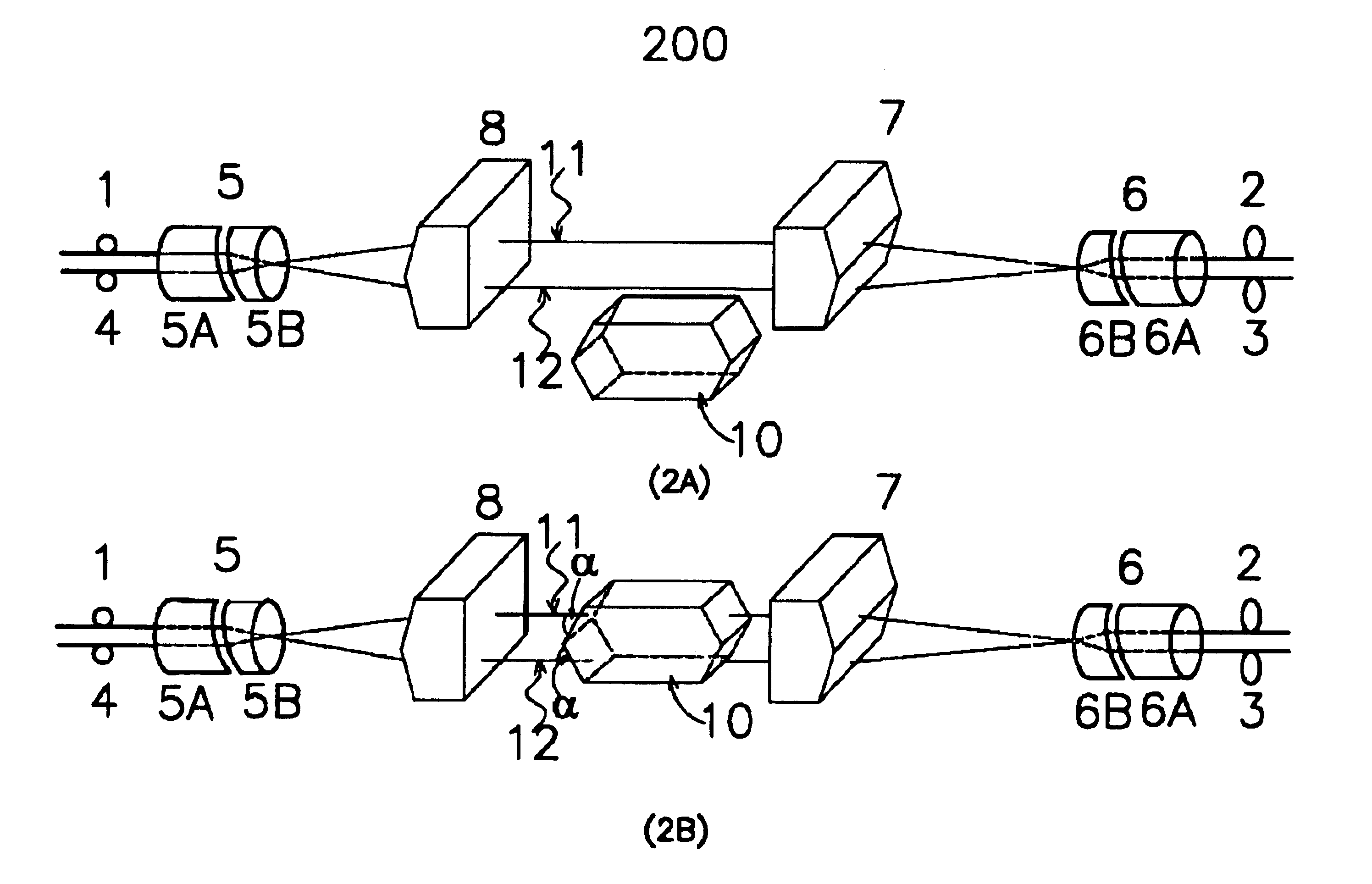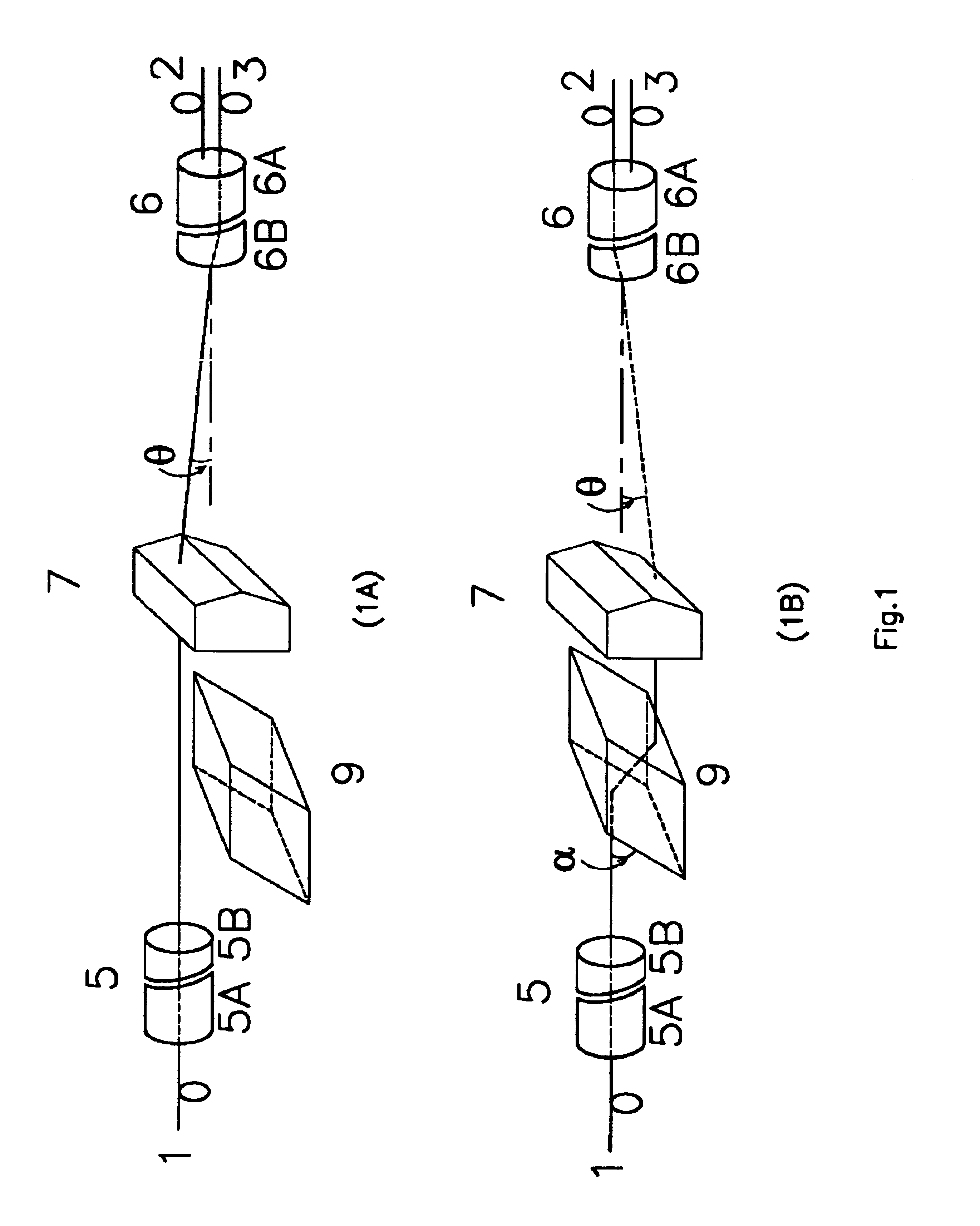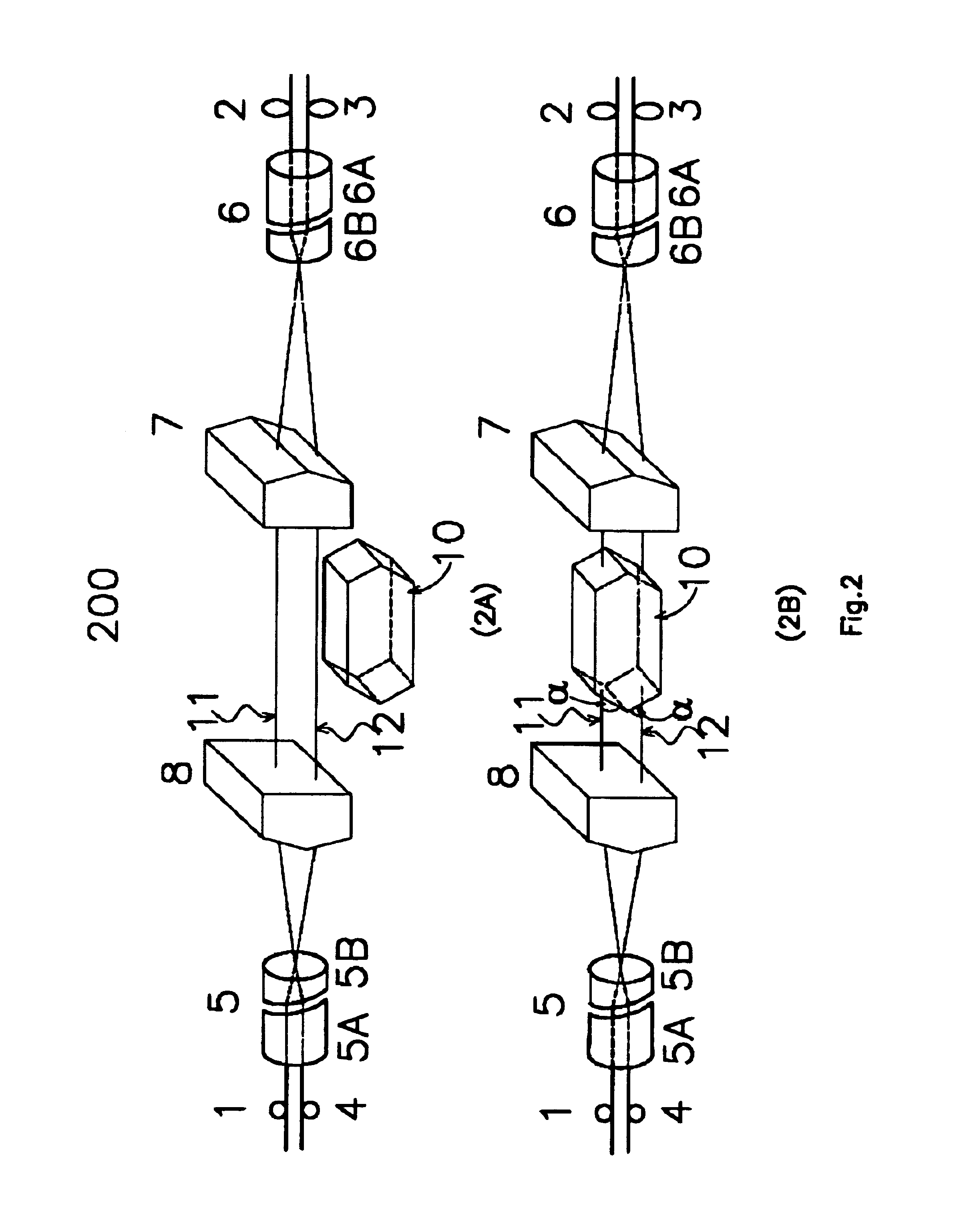Highly stable opto-mechanic switches
a technology of opto-mechanic switches and switches, applied in the field of high-stable opto-mechanic switches, can solve problems such as lack of reliability, inability to adopt widely, and inducing signal distortions that become problematic, and achieves unprecedented stability and longevity against environmental perturbations and wear-ou
- Summary
- Abstract
- Description
- Claims
- Application Information
AI Technical Summary
Benefits of technology
Problems solved by technology
Method used
Image
Examples
first embodiment
To more particularly illustrate the method and system in accordance with the present invention, refer now to FIGS. 1A-B, depicting a one-by-two fiber optic switch 100 incorporating aspects of the invention. FIG. 1A depicts a light path from a fiber 1 to a fiber 3 and FIG. 1B depicts a light path from fiber 1 to a fiber 2. The invention relates to an optical switch comprising several optical components which are optically coupled along the longitudinal axis: a first fiber collimator 5 that expands and collimates a light beam from fiber 1; a movable beam shifter 9 for switching light paths between 1 to 3 and 1 to 2; a beam angle deflector 7 which deflects all beams with a correction angle, such that both optical paths are propagating parallel; and a dual fiber collimator 6 that collimates two beams with one shared imaging lens. The switch described here is a simple opto-mechanical device in which the light beam goes to one fiber without beam shift element 9 in the path and goes into a...
second embodiment
Referring to FIGS. 2A-B, there is shown a two-by-two fiber optic switch 200 incorporating aspects of the invention. Switch 200 utilizes the optical elements described above and the same reference numerals are used to refer to the same parts. The switch 200 has four optical fiber ports, a first fiber 1 and a fourth fiber 4 input light beams through a dual collimator 5 and a second fiber 2 and a third fiber 3 receive the light beams through a dual collimator 6 that is placed opposite to collimator 5. The two light beams emitted from the dual collimator 5 have an angle with respect to each other and two light beams incident on collimator 6 need an entry angle in order to optimally couple into the fibers. In the inventive design, light-bending devices 8 and 7 are incorporated to correct the angle separations for collimator 5 and collimator 6, respectively. Therefore, light beam propagation between device 7 and device 8 is parallel.
As is apparent from FIG. 2A, the switch is aligned such ...
third embodiment
Referring to FIGS. 3A-B, there is shown a mechanical wavelength add / drop fiber optic switch 300 incorporating aspects of the invention. Switch 300 utilizes the optical elements described above and the same reference numerals are used to refer to the same parts. The switch 300 has four optical fibers, a first fiber 1 and a fourth fiber 4 couple light beam through a dual collimator 5 and a second fiber 2 and a third fiber 3 couple light beam through a dual collimator 6 that is placed opposite to collimator 5. The two light beams emitted from the dual collimator 5 have an angle with respect to each other and two light beams incident on dual collimator 6 need a separation angle in order to optimally couple into the fibers. In the inventive design, light-bending devices 8 and 7 are incorporated to correct the angle separations for collimator 5 and collimator 6, respectively. Therefore, light beam propagation is parallel between device 7 and device 8.
As shown in FIGS. 3A-B, an input beam ...
PUM
 Login to View More
Login to View More Abstract
Description
Claims
Application Information
 Login to View More
Login to View More - R&D
- Intellectual Property
- Life Sciences
- Materials
- Tech Scout
- Unparalleled Data Quality
- Higher Quality Content
- 60% Fewer Hallucinations
Browse by: Latest US Patents, China's latest patents, Technical Efficacy Thesaurus, Application Domain, Technology Topic, Popular Technical Reports.
© 2025 PatSnap. All rights reserved.Legal|Privacy policy|Modern Slavery Act Transparency Statement|Sitemap|About US| Contact US: help@patsnap.com



